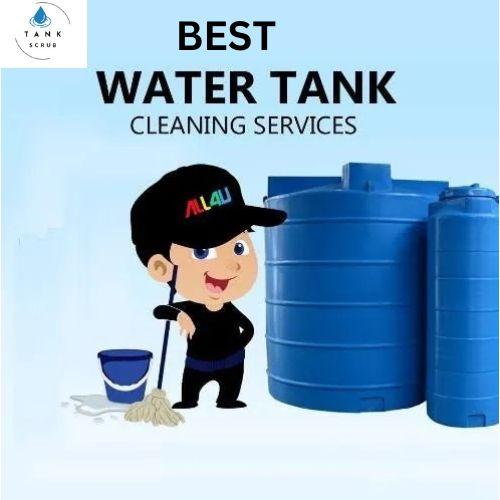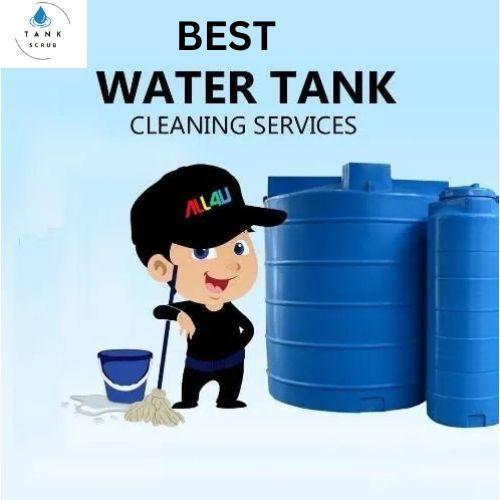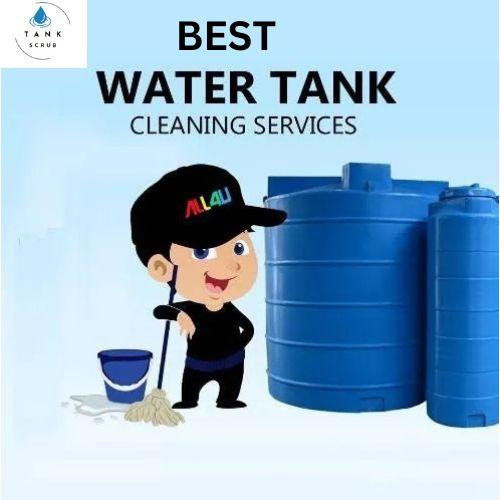The Importance of Cleaning Your Water Tank: A Comprehensive Guide

The Importance of Cleaning Your Water Tank: A Comprehensive Guide
Water is an essential resource for life, and ensuring its cleanliness is vital for health and wellbeing. While many people focus on purifying drinking water, one often-overlooked aspect of maintaining clean water at home or in commercial spaces is the water storage system, specifically the water tank. A water tank holds the water we use for drinking, cooking, bathing, cleaning, and other everyday activities, making it a crucial element of the water supply system.
In this article, we will explore the importance of cleaning your water tank regularly, the risks associated with unclean tanks, how often water tanks should be cleaned, and best practices to ensure that your tank provides safe, clean water at all times.
Why Is It Important to Clean Your Water Tank?
A water tank may seem like a secure and closed environment, but over time, it becomes a breeding ground for contaminants. Several factors contribute to the degradation of water quality within the tank. Some of the most critical reasons to clean your water tank regularly include:
1. Prevention of Bacterial Growth
Water tanks, especially those located in warm climates or exposed to sunlight, provide an ideal environment for bacterial growth. Stagnant water, warm temperatures, and organic matter that might enter the tank create a fertile ground for harmful bacteria, such as Legionella, Escherichia coli (E. coli), and other pathogens.
These bacteria can multiply rapidly in unclean tanks and contaminate the water you rely on for daily use. When consumed or used for cooking, such contaminated water can lead to serious health issues, including gastrointestinal infections, skin problems, and respiratory illnesses. Regular cleaning of the water tank significantly reduces the risk of bacterial contamination.
2. Accumulation of Sediment and Debris
Over time, sediments, silt, and debris settle at the bottom of water tanks. These can enter the tank from various sources, including the water supply, dust, insects, and external contaminants. These particles may seem harmless, but they compromise the overall water quality and can cause blockages in pipes, faucets, and filters.
Sediment buildup can also affect the efficiency of pumps and other water systems. Additionally, stagnant debris can provide a breeding ground for algae and other microorganisms. Cleaning your water tank helps to eliminate these sediments, ensuring clean, sediment-free water.
3. Prevention of Algae Growth
Algae can easily grow in water tanks that are exposed to sunlight or not properly sealed. Algal blooms can discolor the water, give it an unpleasant taste or smell, and even make it unsafe to use. Some types of algae produce toxins that are harmful to human health, particularly if ingested or used for bathing.
To prevent algae growth, it is crucial to regularly clean the tank and ensure that it is sealed and protected from direct sunlight. This will help maintain a hygienic and algae-free water supply.
4. Removal of Rust and Corrosion
In metal water tanks, rust and corrosion are common problems, especially in older tanks or those that are not adequately maintained. Corrosion can compromise the structural integrity of the tank, leading to leaks and contamination of the water with rust particles.
Rusty water can have a metallic taste and can stain clothes, dishes, and fixtures. Regular cleaning and inspection of your water tank will help detect and address any signs of corrosion, preventing rust particles from contaminating your water.
5. Elimination of Harmful Chemicals
Water tanks may be subject to chemical contamination from external pollutants or from the water itself if it contains impurities such as chlorine, lead, or other chemicals. Over time, these chemicals can build up in the tank, affecting water quality and posing health risks.
Regular cleaning helps flush out these harmful substances, ensuring that your water remains safe for consumption and use. In some cases, water testing may be necessary to identify chemical contaminants, and cleaning the tank is an essential part of addressing these issues.
6. Protection Against Insects and Rodents
Water tanks that are not properly sealed can become entry points for insects, rodents, and other pests. Mosquitoes, in particular, are attracted to stagnant water and can lay their eggs in tanks, leading to infestations. Insects and animals not only contaminate the water but can also introduce diseases, such as dengue, malaria, and leptospirosis.
By cleaning your water tank regularly and ensuring that it is securely covered, you can protect your water supply from these unwanted visitors.
7. Enhancing Water Taste and Odor
An unclean water tank can lead to water that smells or tastes bad. Sediments, bacteria, and algae can all contribute to unpleasant odors and tastes in the water, making it unappealing to use. If your water tastes or smells off, it could be a sign that your tank needs cleaning.
Regular cleaning will help maintain the freshness of your water, ensuring that it remains pleasant to drink and use for cooking.
How Often Should You Clean Your Water Tank?
The frequency of cleaning your water tank depends on several factors, including the size of the tank, the quality of the water supply, and how much the tank is used. However, a general guideline is to clean your tank at least once every six months. In some cases, more frequent cleaning may be necessary, especially if:
- The water quality in your area is poor, with high levels of sediment or impurities.
- You notice changes in the taste, smell, or color of your water.
- The tank is exposed to harsh weather conditions or direct sunlight.
- There are signs of pests, algae growth, or debris inside the tank.
For households with sensitive individuals, such as the elderly, children, or people with compromised immune systems, it’s a good idea to clean the water tank more frequently to ensure the highest level of safety.
Steps to Clean a Water Tank Properly
Cleaning a water tank is a multi-step process that requires time and effort. Here's a general guide on how to clean a water tank effectively:
Step 1: Drain the Tank
The first step is to drain the tank completely. Turn off the water supply and open the outlet valve to let all the water out. You may want to use a hose to direct the water away from your home or garden to avoid flooding.
Step 2: Scrub the Interior
Once the tank is empty, use a brush or a scrubber with a long handle to scrub the walls and bottom of the tank. Use a mild detergent or a water tank cleaning solution. Make sure to scrub thoroughly to remove any dirt, sediment, algae, or biofilm that may have built up inside the tank.
Step 3: Rinse the Tank
After scrubbing, rinse the tank thoroughly with clean water to remove any cleaning solution or debris. Make sure all the detergent or cleaning agent is completely washed out before moving to the next step.
Step 4: Disinfect the Tank
Disinfecting the tank is crucial to eliminate bacteria, viruses, and other pathogens that may be present. You can use household bleach (non-scented) for this process. Add one part bleach to every four parts of water and fill the tank about halfway. Let the solution sit for at least 4-6 hours.
After the solution has been left to sit, drain it completely, and rinse the tank thoroughly with clean water to remove any traces of bleach.
Step 5: Refill the Tank
Once the tank has been thoroughly cleaned and disinfected, it's time to refill it with fresh water. Make sure the inlet pipes and other connections are clean before turning on the water supply.
The Benefits of Regular Water Tank Cleaning
Regular water tank cleaning offers numerous benefits for both households and commercial spaces:
- Improved Health and Hygiene: Clean water tanks ensure the water you use for drinking, cooking, and bathing is free from harmful bacteria, pathogens, and chemicals.
- Prolonged Tank Lifespan: By regularly cleaning and maintaining your water tank, you can extend its lifespan and prevent issues such as corrosion, leaks, and damage.
- Better Water Quality: Clean tanks provide fresh, odor-free, and sediment-free water, enhancing the taste and overall quality of the water.
- Reduced Repair Costs: Regular cleaning and inspection help identify potential issues early, reducing the need for costly repairs or replacements.
- Prevention of Waterborne Diseases: Clean tanks reduce the risk of diseases spread through contaminated water, such as cholera, dysentery, and gastroenteritis.
Conclusion
Water tank cleaning is a critical aspect of maintaining a healthy and safe water supply. By keeping your tank clean, you reduce the risk of contamination, improve the taste and quality of your water, and protect your family or customers from harmful pathogens. Whether you have a small household tank or a large commercial water storage system, regular cleaning should be a priority. Make it a part of your routine to inspect and clean your tank at least twice a year, or more often if necessary, to ensure that you are always using clean, safe water.


Comments